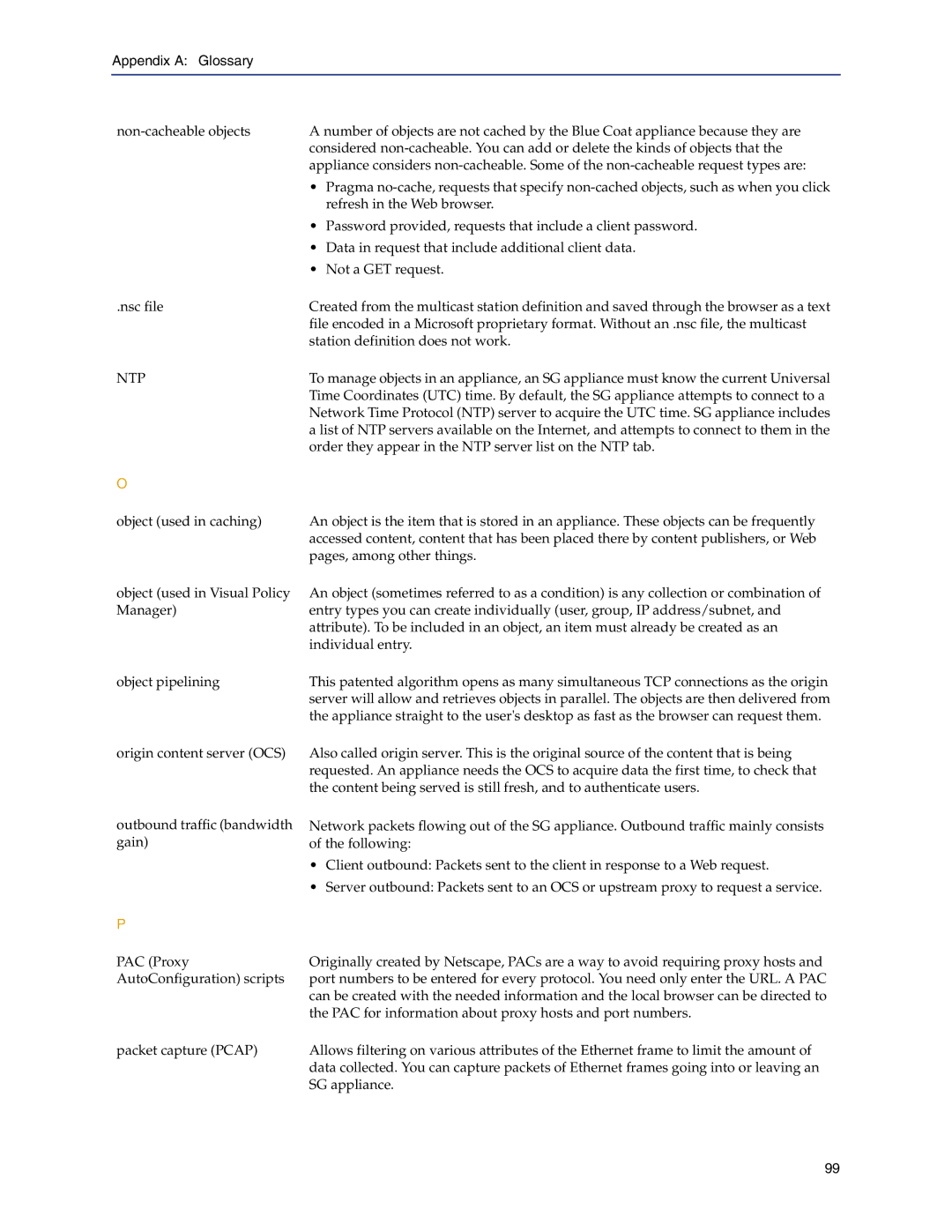Appendix A: Glossary
A number of objects are not cached by the Blue Coat appliance because they are | ||
| considered | |
| appliance considers | |
| • Pragma | |
|
| refresh in the Web browser. |
| • | Password provided, requests that include a client password. |
| • | Data in request that include additional client data. |
| • | Not a GET request. |
.nsc file | Created from the multicast station definition and saved through the browser as a text | |
| file encoded in a Microsoft proprietary format. Without an .nsc file, the multicast | |
| station definition does not work. | |
NTP | To manage objects in an appliance, an SG appliance must know the current Universal | |
| Time Coordinates (UTC) time. By default, the SG appliance attempts to connect to a | |
| Network Time Protocol (NTP) server to acquire the UTC time. SG appliance includes | |
| a list of NTP servers available on the Internet, and attempts to connect to them in the | |
| order they appear in the NTP server list on the NTP tab. | |
O |
|
|
object (used in caching) | An object is the item that is stored in an appliance. These objects can be frequently | |
| accessed content, content that has been placed there by content publishers, or Web | |
| pages, among other things. | |
object (used in Visual Policy Manager)
An object (sometimes referred to as a condition) is any collection or combination of entry types you can create individually (user, group, IP address/subnet, and attribute). To be included in an object, an item must already be created as an individual entry.
object pipelining | This patented algorithm opens as many simultaneous TCP connections as the origin | |
| server will allow and retrieves objects in parallel. The objects are then delivered from | |
| the appliance straight to the user's desktop as fast as the browser can request them. | |
origin content server (OCS) | Also called origin server. This is the original source of the content that is being | |
| requested. An appliance needs the OCS to acquire data the first time, to check that | |
| the content being served is still fresh, and to authenticate users. | |
outbound traffic (bandwidth | Network packets flowing out of the SG appliance. Outbound traffic mainly consists | |
gain) | of the following: | |
| • | Client outbound: Packets sent to the client in response to a Web request. |
| • | Server outbound: Packets sent to an OCS or upstream proxy to request a service. |
P |
|
|
PAC (Proxy | Originally created by Netscape, PACs are a way to avoid requiring proxy hosts and | |
AutoConfiguration) scripts | port numbers to be entered for every protocol. You need only enter the URL. A PAC | |
| can be created with the needed information and the local browser can be directed to | |
| the PAC for information about proxy hosts and port numbers. | |
packet capture (PCAP) | Allows filtering on various attributes of the Ethernet frame to limit the amount of | |
| data collected. You can capture packets of Ethernet frames going into or leaving an | |
| SG appliance. | |
99
